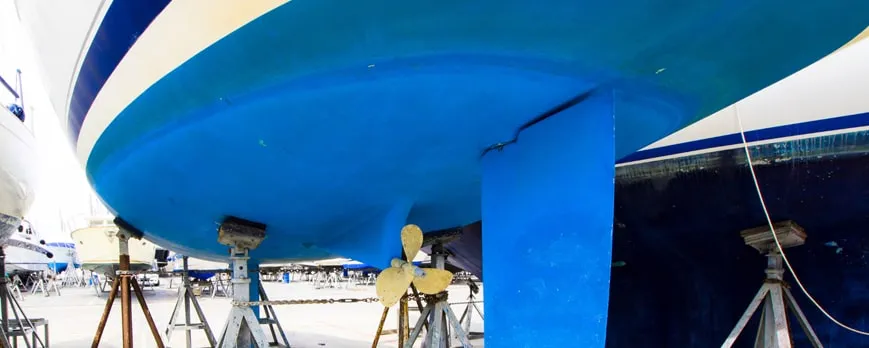In the realm of maritime maintenance, Easy Foul Release Marine Coatings are revolutionizing vessel protection. Designed to minimize biofouling—the accumulation of aquatic organisms on ship hulls—these coatings reduce drag, enhance fuel efficiency, and contribute to a healthier marine ecosystem. This guide dives deep into the benefits, types, and application of foul release coatings, helping you understand their growing importance in marine sustainability.
Introduction to Easy Foul Release Marine Coatings
Marine environments present unique challenges for vessels, with fouling being a significant issue. Foul release marine coatings offer a solution by creating a slick surface that makes it difficult for marine organisms to adhere, contributing to cleaner hulls and lower operational costs.
What Are Marine Coatings?
Marine coatings protect vessels from harsh ocean elements, including salt, water, and marine organisms. They range from anti-corrosion coatings to foul release coatings specifically designed to combat biofouling.
The Importance of Foul Release Coatings in Marine Industry
In the shipping and boating industries, foul release coatings are crucial. By reducing drag caused by biofouling, these coatings improve fuel efficiency and reduce maintenance needs, ultimately lowering greenhouse gas emissions and operational costs.
How Easy Foul Release Marine Coatings Work
Easy foul release coatings work by creating a non-stick surface that discourages the adhesion of marine organisms. These coatings typically use advanced materials to achieve low surface energy, which means marine organisms struggle to attach and are easily washed away.
The Science Behind Foul Release Coatings
Foul release coatings are designed using silicone or fluoropolymer technologies, creating surfaces with low surface energy. This means organisms like algae and barnacles cannot secure a firm grip, reducing the amount of drag on the vessel.
Key Components and Ingredients
The effectiveness of foul release coatings depends on their base materials, such as silicone and fluoropolymers. These materials create a hydrophobic layer, preventing water and organisms from bonding with the hull.
Benefits of Using Easy Foul Release Marine Coatings
Investing in easy foul release marine coatings offers numerous benefits, from operational savings to environmental sustainability.
Improved Fuel Efficiency and Reduced Costs
Fouling increases drag, which demands more fuel. By reducing biofouling, these coatings improve fuel efficiency, lowering fuel consumption and associated costs.
Enhanced Marine Ecosystem Protection
Traditional antifouling paints often contain harmful chemicals. Easy foul release coatings, however, reduce environmental harm by avoiding toxic substances and reducing the need for frequent hull cleaning.
Durability and Long-Term Savings
These coatings are designed for long-lasting performance, with durability features that withstand harsh marine conditions. They also reduce maintenance costs by decreasing the frequency of hull cleaning and coating reapplication.
Types of Foul Release Marine Coatings
Different types of foul release coatings are available, each tailored to specific requirements.
Silicone-Based Coatings
Silicone-based coatings are widely used for their non-stick properties, which make it difficult for organisms to attach. They are cost-effective and easy to apply.
Fluoropolymer-Based Coatings
Fluoropolymer-based coatings offer superior resistance to adhesion and improved durability, ideal for vessels operating in high-fouling regions.
Hybrid Coatings
Hybrid coatings combine silicone and fluoropolymer properties, providing a balance of durability, effectiveness, and cost-efficiency.
How to Apply Easy Foul Release Marine Coatings
Applying foul release coatings requires careful preparation and attention to detail to ensure optimal results. Proper application can significantly extend the lifespan of the coating and maximize its effectiveness in reducing biofouling.
Surface Preparation Requirements
Surface preparation is essential before applying any foul release coating. The hull surface should be thoroughly cleaned to remove any existing biofouling, dirt, or residue. Sanding may be necessary to create a smooth, even surface, and the use of a primer is often recommended to ensure the coating bonds effectively to the hull.
Application Techniques
Easy foul release coatings can be applied through spray or roller methods. Spraying provides a more uniform layer and is often preferred for larger vessels, while rolling can be a practical option for smaller boats. Ensuring even coverage is key to maximizing the coating’s non-stick properties and durability.
Maintenance and Reapplication Guidelines
While foul release coatings are durable, regular maintenance helps extend their life. Inspect the coating periodically for signs of wear, especially after long voyages or exposure to harsh conditions. Reapplication is typically needed every 3-5 years, though this can vary depending on the type of vessel and operating conditions.
Challenges and Considerations for Foul Release Marine Coatings
While easy foul release coatings offer numerous advantages, some challenges and considerations must be kept in mind, particularly when operating in diverse marine environments.
Environmental and Regulatory Considerations
Foul release coatings are designed to be eco-friendly, but local regulations may influence the types of coatings permissible in certain waters. Compliance with environmental standards is essential, especially for vessels operating in protected marine areas.
Performance in Various Marine Environments
The effectiveness of foul release coatings can vary based on water temperature, salinity, and other environmental factors. In some tropical waters, where biofouling is more intense, performance may be affected, and more frequent maintenance may be required to retain efficiency.
Comparing Foul Release Coatings with Other Anti-Fouling Solutions
Foul release coatings are just one of several options available for managing biofouling. Understanding the differences between foul release coatings and other antifouling methods can help vessel owners choose the best solution.
Biocidal vs. Non-Biocidal Coatings
Biocidal coatings contain chemicals that actively repel or kill marine organisms but can have adverse environmental impacts. In contrast, non-biocidal coatings like easy foul release coatings rely on physical properties to prevent fouling, offering a safer alternative for the environment.
Advantages of Non-Toxic Foul Release Coatings
Non-toxic foul release coatings, unlike traditional antifouling paints, do not release harmful chemicals into the water. This makes them ideal for environmentally conscious operations and for vessels that frequently travel through protected marine areas.
Cost Analysis and Investment Return of Foul Release Coatings
Investing in easy foul release marine coatings may involve higher upfront costs than traditional coatings, but the long-term savings are substantial.
Upfront Costs and Longevity
The initial cost of applying foul release coatings is higher due to the premium materials and application methods. However, the durability of these coatings can reduce the need for frequent reapplications, balancing out the initial investment over time.
Long-Term Cost Savings for Vessel Owners
In the long run, foul release coatings contribute to significant cost savings through reduced fuel consumption, lower maintenance requirements, and longer intervals between recoating. These savings make foul release coatings a financially sound choice for many vessel owners.
Environmental Impact of Easy Foul Release Marine Coatings
Easy foul release marine coatings offer several environmental advantages compared to traditional antifouling methods, aligning with sustainable maritime practices.
Marine Life and Ecosystem Benefits
Because foul release coatings do not rely on toxic chemicals, they are safer for marine life, reducing pollution and supporting cleaner waters. This helps preserve biodiversity in areas frequented by vessels.
Eco-Friendly Certifications and Standards
Many foul release coatings are certified by eco-friendly standards, such as LEED and the EPA’s Safer Choice program. Such certifications indicate that the product meets rigorous environmental and performance criteria, making them an ideal choice for eco-conscious operators.
Conclusion: Choosing the Right Marine Coating for Your Vessel
In conclusion, Easy Foul Release Marine Coatings offer vessel owners a sustainable, cost-effective, and eco-friendly solution to biofouling. By choosing the right coating type and following best practices for application and maintenance, vessel operators can enjoy enhanced fuel efficiency, reduced maintenance costs, and a lower environmental impact. Whether for commercial shipping or recreational boating, foul release coatings represent a wise investment in both vessel performance and environmental stewardship.


